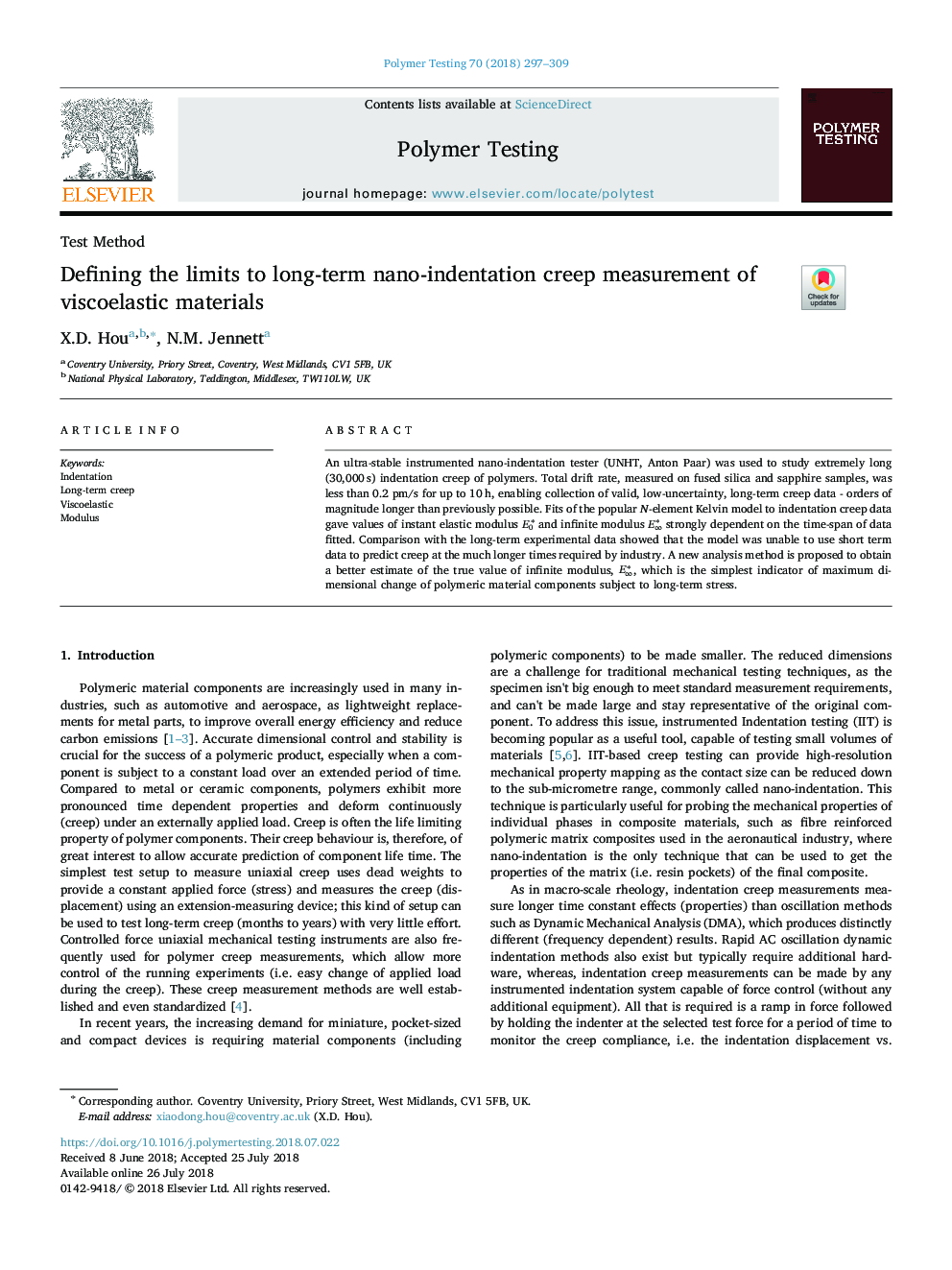| Article ID | Journal | Published Year | Pages | File Type |
|---|---|---|---|---|
| 7824462 | Polymer Testing | 2018 | 13 Pages |
Abstract
An ultra-stable instrumented nano-indentation tester (UNHT, Anton Paar) was used to study extremely long (30,000â¯s) indentation creep of polymers. Total drift rate, measured on fused silica and sapphire samples, was less than 0.2 pm/s for up to 10â¯h, enabling collection of valid, low-uncertainty, long-term creep data - orders of magnitude longer than previously possible. Fits of the popular N-element Kelvin model to indentation creep data gave values of instant elastic modulus E0â and infinite modulus Eââ strongly dependent on the time-span of data fitted. Comparison with the long-term experimental data showed that the model was unable to use short term data to predict creep at the much longer times required by industry. A new analysis method is proposed to obtain a better estimate of the true value of infinite modulus, Eââ, which is the simplest indicator of maximum dimensional change of polymeric material components subject to long-term stress.
Related Topics
Physical Sciences and Engineering
Chemistry
Organic Chemistry
Authors
X.D. Hou, N.M. Jennett,
